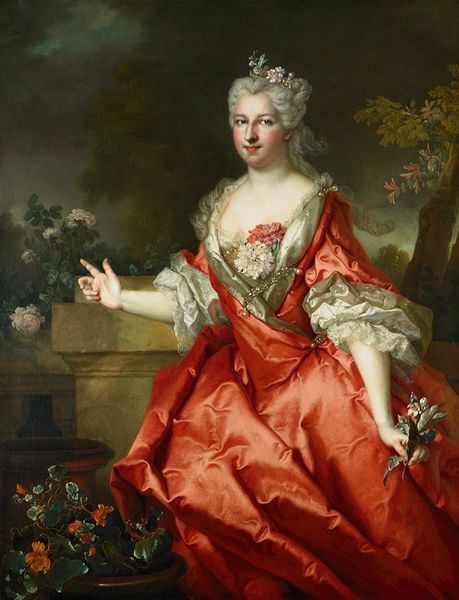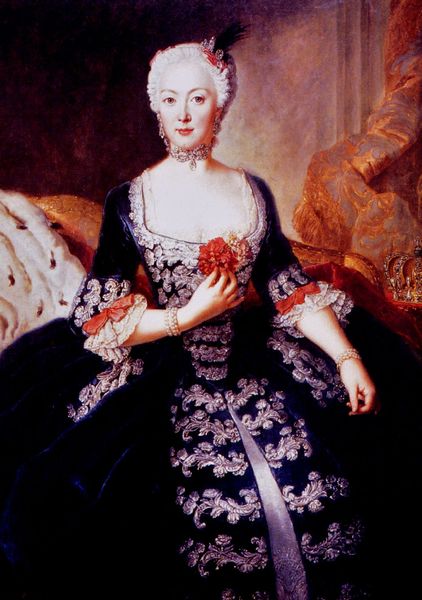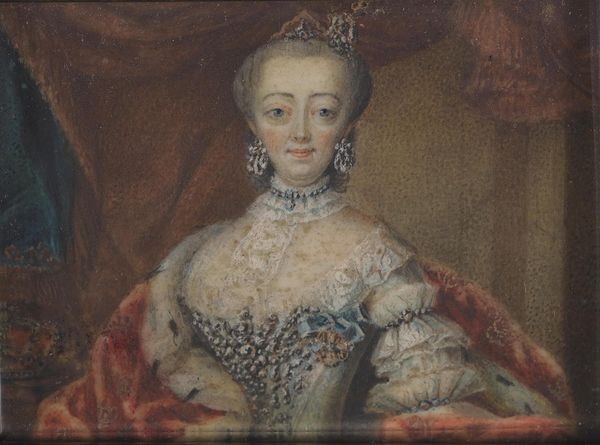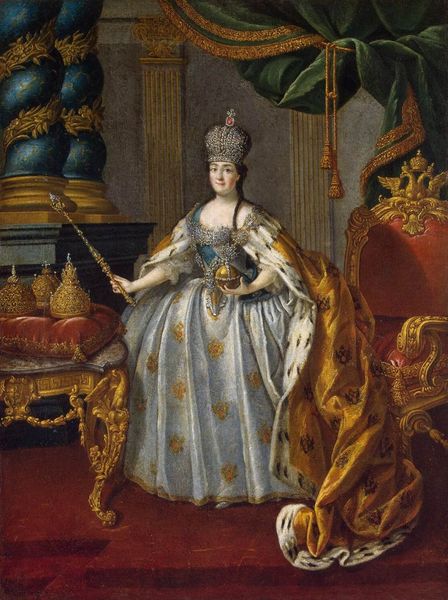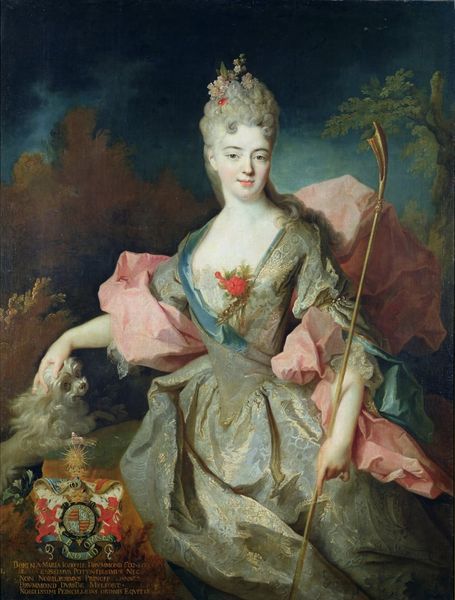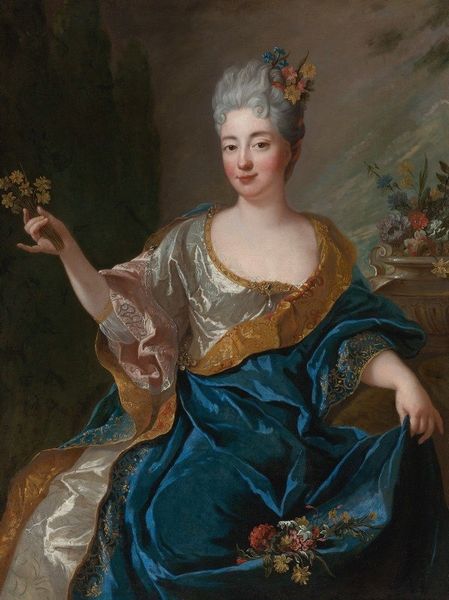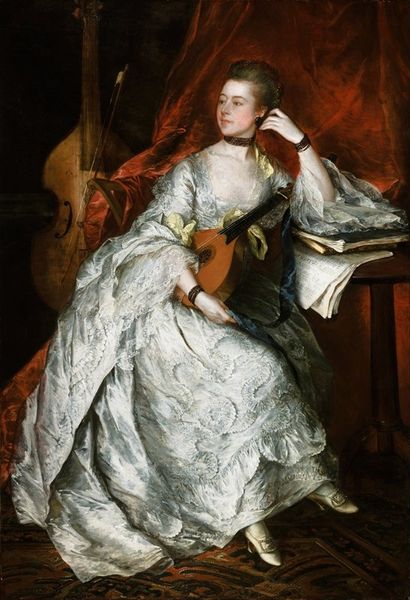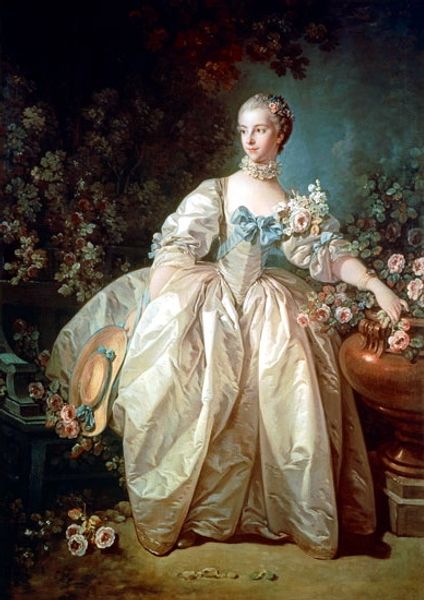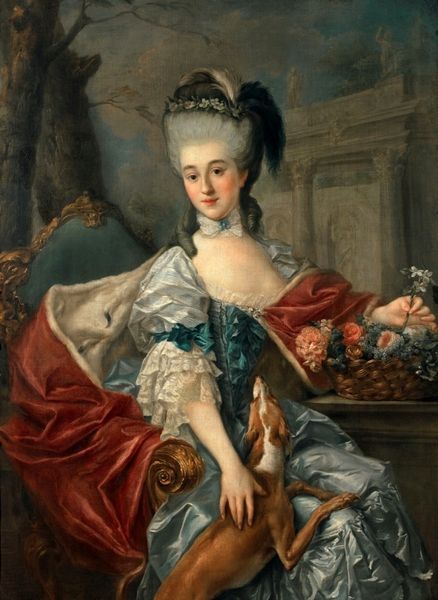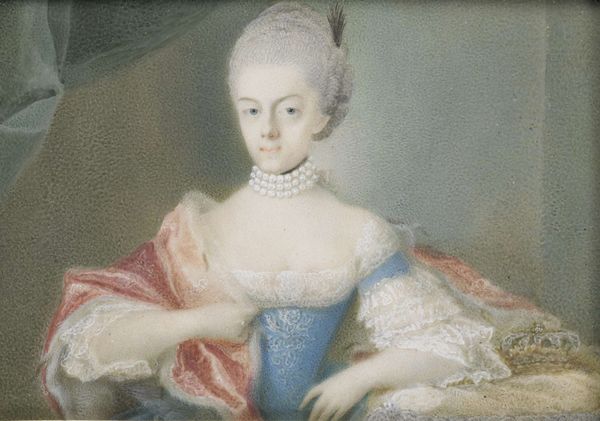
oil-paint
#
portrait
#
oil-paint
#
landscape
#
figuration
#
oil painting
#
costume
#
genre-painting
#
history-painting
#
rococo
Dimensions: 221 x 140 cm
Copyright: Public domain
Editor: Here we have Antoine Pesne's "Portrait of the dancer Barbara Campanini aka La Barbarina," painted in 1745 using oil paint. The fabric of her gown is quite striking – all that silver and those bright floral details. What speaks to you most about this painting? Curator: I find myself drawn to the socio-economic context made so visible through the material opulence displayed. Consider the layers of labor embedded in her costume. Who created the fabric, who dyed it, who embroidered those flowers? The painting celebrates individual celebrity, while obscuring the complex networks of production required to make it. Editor: That's a compelling way to look at it. It is easy to be taken by the dancer herself and the Rococo style, but when you consider all that, she's wearing someone's livelihood! Curator: Precisely! And the use of oil paint itself – what did it signify to portray her in this manner, considering the price and technique of working in oil, versus other less prestigious, more affordable media such as pastels or even printmaking? Who was this painting made for, and what kind of consumption habits does it suggest? Editor: So, it becomes less about celebrating the dancer as an individual, and more about what her image signifies in terms of production and class. Do you think Pesne was trying to make a statement about labor practices at the time, or simply reflecting his environment? Curator: Whether a conscious critique or not, the painting is an artifact embedded in a system of labor and consumption. We can excavate those embedded processes by examining its materiality and production context. It speaks volumes, intentionally or not. Editor: I never would have thought to approach it that way. I was so focused on the dancer. Now I see how much more there is. Curator: Indeed, by understanding how it was made, we start to really see the world in which it was made.
Comments
No comments
Be the first to comment and join the conversation on the ultimate creative platform.


